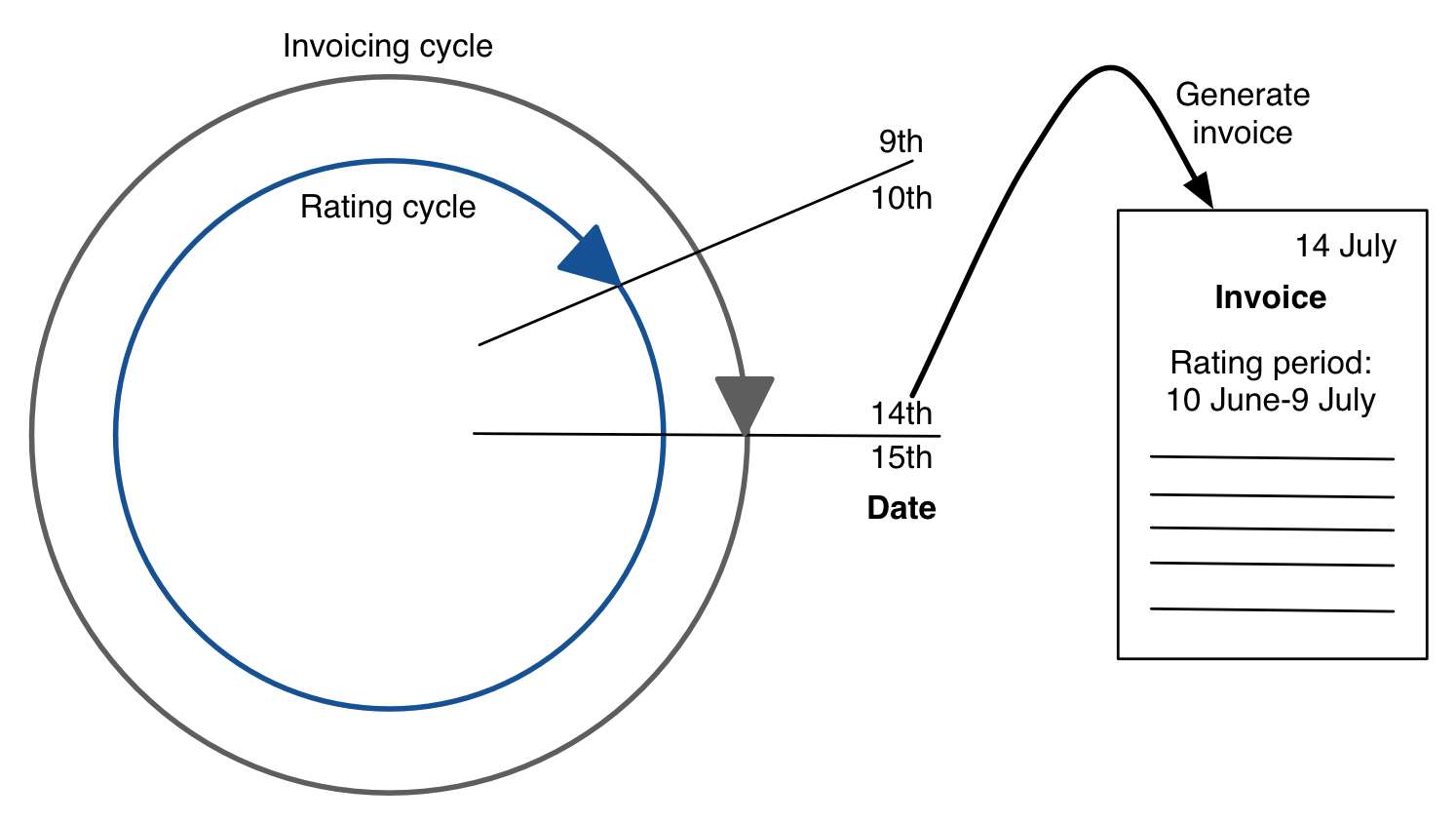Rating and invoicing cycles
- rating cycle—specifies the length of time for which usage charges are calculated.
- invoicing cycle—specifies when a customer is sent an invoice.
Each instance of a rating or invoicing cycle is named a period. For example, a subscription may have a rating cycle that ends on the 14th of each month and a rating period of 15 May 2012-14 June 2012.
Each subscription has both a rating and invoicing cycle. The rating and invoicing cycles may end on the same date or have different end dates. Rating and invoicing cycles can end at the end of the month or on the subscription's anniversary. The anniversary is the day of the month on which the subscription was created.
If an account has multiple subscriptions, by default Smile sets all subscriptions to use the same invoicing cycle as the account. This lets you issue a single bill for the account each month.
When a billing run starts, Smile creates an invoice for each account that has a subscription with an invoicing period that ends on the date of the billing run. If an account contains two or more subscriptions with the same invoicing period end date, Smile adds the charges for both subscriptions to the same invoice.
Example: Rating and invoicing cycles
- The rating cycle begins on the 10th of each month and ends on the 9th of the following month.
- The invoicing cycle begins on the 15th of each month and ends on the 14th of the following month.
For example, on the invoicing period end date of 14 July, Smile will generate an invoice for the rating period of 10 June-9 July.
Figure: Rating and invoicing cycles
